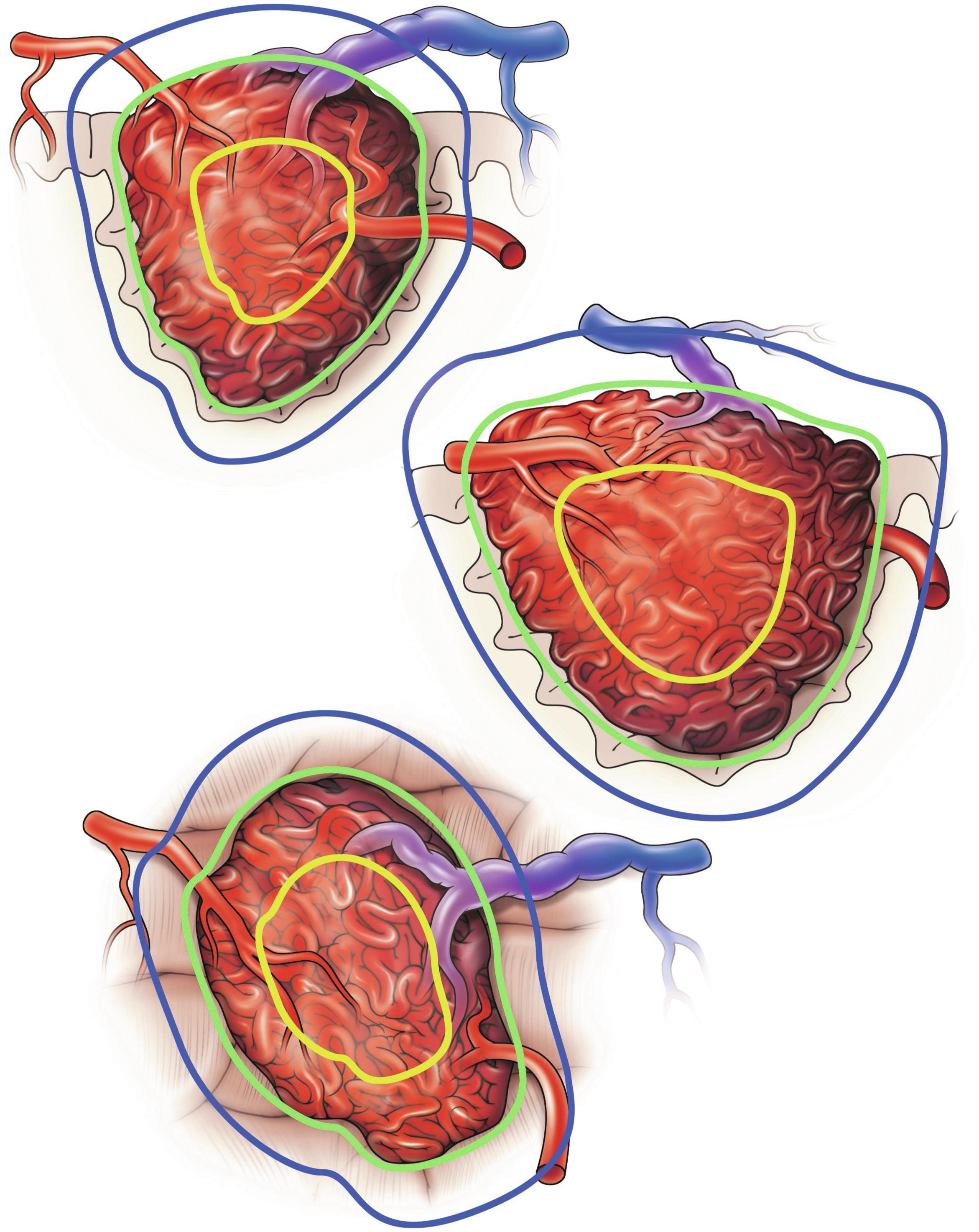Physical Address
304 North Cardinal St.
Dorchester Center, MA 02124
Stereotactic radiosurgery is a reasonable and well-studied treatment strategy for AVM patients.
Treatment success and complication profiles are a function of AVM nidus, cortical eloquence, and overall AVM flow.
Strong predictive models remain an area of research.
Innovations in radiosurgery involve the use of radiosensitizers, staging dosage, and volumetric targeting for AVMs exceeding 3 cm, and an evolving role for adjunctive endovascular embolization.
Concluding case example illustrates the application of these approaches.
Stereotactic radiosurgery (SRS) is a minimally invasive technique that has become increasingly attractive to patients and physicians for the treatment of arteriovenous malformations (AVMs) due to its success rate and well-defined risks. High rates of obliteration can be achieved with SRS, especially for AVMs that are not amenable to surgical or endovascular treatment.
SRS is a well-established alternative to resection in the treatment of AVMs, with the best results obtained in small- to medium-sized AVMs located in noneloquent areas. For AVMs ≤3 cm in diameter, complete obliteration rates of ~80% can be achieved. After confirmation of obliteration on MRI or digital subtraction angiography (DSA), the subsequent risk of hemorrhage is well less than 1%. The benefit-to-risk ratio for unruptured AVMs is appealing, particularly for patients with more than 10 years at risk from the time of diagnosis.
The primary target of SRS for AVMs is the nidus’ vascular endothelial cells ( Fig. 40.1 ). Radiation induces endothelial cell injury, myointimal proliferation, collagen deposition, vessel hyalinization, and eventual vascular thrombosis, causing progressive luminal closure and gradual nidus obliteration. Radiation also upregulates proapoptotic factors such as p53, p21Waf-1, and mdm-2 mRNA, which initiate cascades resulting in cellular apoptosis. In addition, elevation of transforming growth factor-β (TGF-β) and α-smooth muscle actin generates fibroblast transformation into myofibroblasts, possibly leading to shrinkage and obliteration of cerebral AVMs.

The primary predictor of successful AVM obliteration is the radiation dose delivered to the lesion. Dose is measured in grays (Gy), with 1 Gy defined as the absorption of one joule of energy per kilogram of matter. A margin dose ≥16 Gy delivered in a single fraction is associated with a significantly higher rate of AVM obliteration.
Grading scales are also highly important for AVMs as they integrate individual predictors of outcome into an overall grade or score, which correlates with posttreatment outcomes and can serve as a basis to therapeutic decision making. The most widely used AVM grading system, described by Spetzler and Martin (Spetzler-Martin grade), has been shown to correlate with AVM SRS outcome with a reported area under the receiver operating characteristic curve (AUROC) of 0.6, suggesting no discrimination. However, given that its original use was to provide a grading system for predicting operative morbidity and mortality after resective surgery, it may not accurately reflect SRS outcomes.
Consequently, SRS grading scales have been developed, including the Virginia Radiosurgery AVM Scale (VRAS) and the radiosurgery-based AVM score (RBAS). The best independent predictors of outcome were components of the VRAS (eloquence, volume, and history of hemorrhage), and the grading scale was found to represent a modest improvement over both the Spetzler-Martin grading scale and the RBAS as a tool in predicting post-SRS AVM outcome, with an AUROC of 0.67. It should be noted, however, that predictors of outcomes following SRS may differ between pediatric and adult populations; while prior hemorrhage is a major outcome predictor factor in adults, the significance of prior hemorrhage for SRS outcomes in pediatric patients is less well defined. Strong predictive models have been elusive and remain an area of ongoing research.
Become a Clinical Tree membership for Full access and enjoy Unlimited articles
If you are a member. Log in here